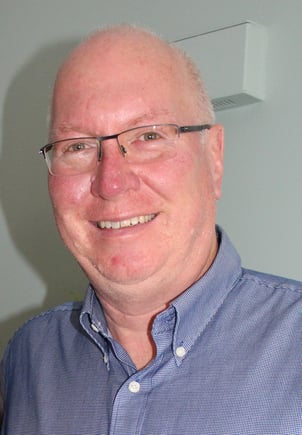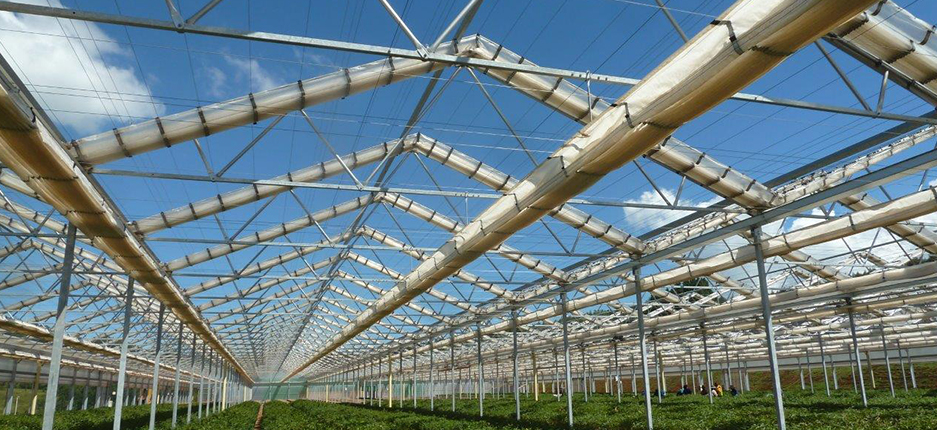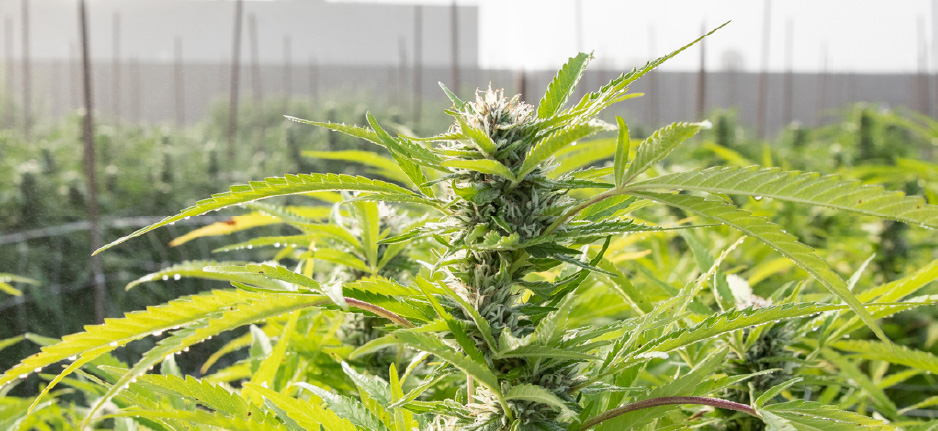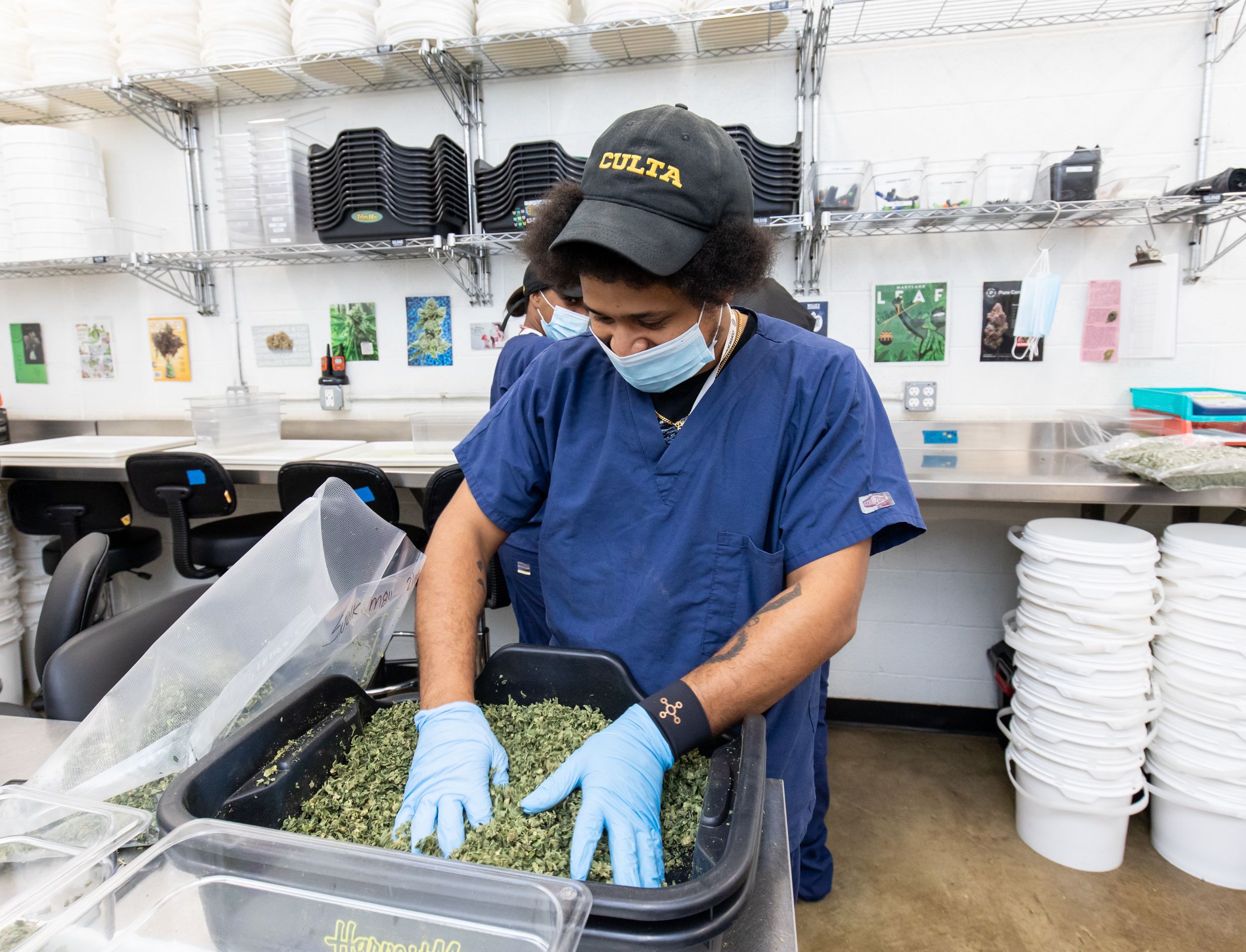As the cannabis industry continues to grow, so does the desire for cannabis cultivators to grow high-quality cannabis year-round. Unfortunately, not every grow operation is located in California, so things like snow, rain, extreme cold, and extreme heat have to be contended with. In comes Cravo, a manufacturer of automatic retractable roof houses that allow growers to exploit the low-cost advantage of growing cannabis outdoors while solving the challenges of weather and contamination.
CULTA installed a Cravo system in 2020 as part of our outdoor expansion efforts, and we’ve been enjoying the benefits of the state-of-the-art system ever since. If you’re a cannabis company that’s interested in what Cravo can do for your outdoor crop, keep reading for an interview our Senior Director of Marketing, Renier Fee, had with Cravo’s President and CEO, Richard Vollebregt.
-----------------------------------------------------------------------------------------------------------------------------
Hello Richard. Thank you for agreeing to this interview. It's nice to meet you. Let's start off by giving an introduction of who you are.
My name's Richard Vollebregt, the President and CEO of Cravo equipment. Also, the owner of it. And I've been with the company for over 35 years. It is a family business. My father started 45 years ago, and I led the development of the retractable roof design, also the development of the retractable roof automated control strategies, and also led the R&D at our facilities.
That's impressive. Tell me more about the history of Cravo. When were you founded? What was the evolution of your business model?
It's been a long journey. We started making retractable tarping systems for dump trucks, and then we got into retractable thermal blankets to go inside conventional greenhouses, retractable shading systems inside greenhouses, then we started developing outdoor retractable roofs. We started the first ones back in 1981-82 for tree seedlings north of Duluth, Minnesota, then got into retractable frost protection systems, and then retractable rain protection systems, and then finally we have complete integrated packages now with retractable roofs, retractable cooling roofs, retractable insect screening, and retractable black out for day length control. And we're doing those systems globally in the flower market, the cannabis market, the cherry market, the berry market, and the vegetable market.
What about the name Cravo? What is the origin of that name?
A very simple answer. When the business was founded, my father had a partner whose last name was Cramero, and if you take a CRA from Cramero and the VO from Vollebregt and you put them together, you end up with Cravo.
Thank you for explaining that! You make these Cravos for various industries, like you said earlier, fruit, vegetable, flowers. How do those industries differ from the needs for cannabis clients?
Well, there's really two things. You’ve got where you are located; what climate zone are you in and then you've got what industry you’re in. And so in the cannabis industry, if you are in a northern climate, you would typically look at a retractable roof as an extended growing season. But if you're in the Northeast, it's really tough to grow a cannabis crop in a retractable roof through the dead of winter when it's dark and really cold outside. And so when growers are looking at trying to increase their production in a sustainable, cost-effective manner, they start with exploring how to grow outdoors, and then they find out they have challenges with either a late frost, hail, rain, wind, storms, [and what they] do on the flowers, you know causing bud rot, or a late frost. And so when people in the cannabis industry are looking at trying to expand their production in a relatively low-cost manner, but in a system that really allows you to reap the benefits of growing the plants in the natural outdoors, but then automatically protecting the crops from the adverse weather conditions that can happen on a given day or from changing seasonally from spring to summer to fall.
You mentioned this earlier that the northeast does not have ideal weather for growing outside. Your system essentially protects the crop from those adverse weather conditions, correct?
Right. What we're trying to do, in a simple way, you can say we're trying to get the best of both worlds. We want the best of a greenhouse environment, and the best of an outdoor environment. So when you have ideal conditions outside, nothing beats letting the sun shine on the plants; you get full sun radiation, you've got good humidity control, you get a little bit of wind, and those plants develop the natural disease and insect resistance from being exposed to the outdoors. But the moment the weather outside becomes adverse ie, it's raining, there’s hail, it's too windy, it's too hot, it’s too cold, there’s too much dew, the roof will automatically close to protect the plants from those adverse conditions, for as long as those adverse conditions exist. And the moment it's no longer too hot, too cold, too wet, or too windy, the roof automatically retracts in order to get the plants back outside so that you can, again, expose the plants to the natural outdoors to get that natural terpene profile and plant structure.
When you first engaged with CULTA, what were some of the project requirements to make your Cravo system work in our campus in Cambridge, Maryland?
Well, the typical thing is that you first need to make sure that you're compliant with local building codes, so snow load and wind load. So that's really the first defining criteria is making sure that you're complying with the county regulations from a snow and wind point of view. After that, you then start to look at what was the goal of the facilities, do you want to just do one long cycle, do you wanna do multiple cycles, do you want light deprivation in there so you can do two cycles, and so in this particular facility, it has a retractable roof that has a retractable insect net, and it has got retractable light deprivation, so that basically CULTA can manage virtually every element of the environment when it's adverse, and so the three layers will all be retracted on a beautiful day. So the plants are growing outside, the walls also will go up and down, and so if it's too windy, you close the walls to protect the plants from physical damage and also just from excessive stress. If the sun's too hot, they're gonna close the insect net to shade the plants. If the insect pressure is really high, they can close the insect net to keep the insects away. So in this particular facility, they have all of the tools necessary to be able to create a very positive growing environment. And with the addition of the blackout system, it gives you a fantastic heat retention or energy efficiency for when it’s cold, which allows you to now plant your first crop in the retractable roof earlier in the spring and use minimal heat in order to keep these plants warm at night. And the same thing in the fall. If you want to extend your growing season and/or delay the harvest so you can space the harvest out so you have less pressure on your drying and processing facilities, they'll have the ability to regulate the environment in order to allow the production team to properly plan and execute the harvest.
CULTA uses an A-frame model. But you have four types of Cravo systems; you have the A-Frame, the Rafter, the X-frame, and the Flat Roof. Can you explain the differences of each and the benefits?
The A-frame, Rafter, and X-Frame are all peaked roof houses, meaning the roofs are in the shape of an A-frame, it’s got a non-porous covering and a gutter system to collect water. And the only difference between those three models is really the load carrying capacity from a snow and wind load point of view. So because you're located on the Eastern seaboard and you have snow loads and you can have hurricanes coming up the coast, the A-frame model is the strongest one that can be designed up to 165 mile per hour wind loads and over 35 pound per square foot snow loads. So the model that CULTA has is the A-frame because that's what's required for the local codes. If you're in Florida, you don't have the same snow load, if you're in California, you don't have the same wind load as Florida does, so the X-frame and the rafter models are really designed as a lower cost structure for locations where they don't have the same heavy snow loads or strong wind loads. The retractable flat roof house has a water porous roof covering, so it's really designed for the arid climate. So that would really be in the Southwest where rain is not a frequent event. And so the flat roof is the most economical model, and it's designed for covering large areas economically to protect from cold, heat, wind and the impact of rain or hail, but it will not keep the plants dry. So if you're trying to keep the plants dry on the Eastern seaboard, then the flat roof does not work and it does not comply with the snow loading requirements.
But no matter the roof type, they all can be configured with computer automated settings. Are those settings driven by the weather or is it set by the cultivator or is it a combination of both?
Well, the control strategies are basically pre-defined in the sense that we try to use the house to create several different growing environments that any commercial growers are familiar with. So if the roof and the walls are closed, you have a greenhouse environment to keep it warmer. Now, if you've ever been outside on a cool day, but it's sunny out, if you're out of the wind, but in the sun, you feel warm, and so you move from that to what we call a wind break setting, which is where all the four walls are closed to keep the cold wind off the crop, but the roof is retracted in order to get the sun in shining on the crops, warming it up and drawing all the condensation off the leaves. If it's warmer still, then the walls would come up and you'd be basically in an outdoor setting because you'd have full wind exposure, direct sunlight exposure, and then if the sun is becoming too strong and it's creating too much stress on the plants, then you would close the roof part way or close the insect net or the cooling roof in order to block the sun. Just like a cloud blocks the sun and it cools everything down, you would close one of your roof coverings to keep the direct sunlight off the plant. So conceptually, it doesn't matter what crop you're growing, you're moving from that crop covering system to a wind break to an open field to a shade house or cooling house mode, but the cultivator will determine the set points -- what temperature do they wanna go into a protected environment, at what temperature do they wanna get the plants back outside, at what temperature do they wanna protect the plants from too much heat and sun radiation.
And these can all be configured and controlled remotely via computer. Correct?
That's correct. There's a weather station outside this monitoring the outdoor weather, and if the set points are exceeded, that automatically a roof or wall will activate.
What are some of the biggest challenges you see for someone who's investing in a Cravo?
If you've never grown in a retractable roof before, the first thing is really understanding how to design the production system inside. So are you going to do a single crop... Are you gonna do two crops or three crops, what size pots you're gonna use... What's your plant density? So really, it's more just a matter of getting the experience of growing in a managed environment. So if you take a cultivator growing in a true indoor environment and you put them to manage an outdoor environment, he's not gonna know what to do because his field of experience is indoor. Inversely, if you take an outdoor grow and you put him indoors, he doesn't know how to control indoors, he knows how to manage an outdoor plant. So in a retractable roof situation, you're actually in a hybrid where you are able to achieve the benefits of an outdoor grow and the benefits of an indoor protected growth. And so it's a matter of just learning to look at the plants, understand how they're developing, and then change your set points to influence the development. And for example, in the case of CULTA, we set up a grower success group, where we had meetings on a regular basis, where your production managers were looking at the crops, communicating what they liked about the plant, what they didn't like about the plant development, and then we would use our background and understanding plant physiology and control strategies on how to change the set points in order to alter the plant development, so that the cultivator was happy that the plant’s developing exactly the way they want.
I'm sure that it's probably not a blanket statement to say that one setting works for all plants. It probably varies also according to strain, right? Or, it also varies by cover crop?
Oh, for sure, for sure. I'm not sure how much it will vary by strain, but if you were doing multiple planting cycles and you had a crop that just came out of the veg house, you would probably create a different environment than if you had another crop that was ready for harvesting.
The same thing would be true for auto flowers as well, right?
Right, yep. Right.
For anybody reading this, the cost must be top-of-mind. How do you price your systems?
It's all priced by doing an actual design and layout. So cultivators, they'll be in different parts of the country, they'll have different sized houses they wanna build, they'll have different snow and wind load or county regulations they have to meet, and they'll have different objectives on whether they want a light dep system in there or not. And so we basically work through with the client to understand what their needs are, what are they actually trying to accomplish... And then we've developed a 10-step design guideline that helps us create the specs for the solution that would meet the client's requirements. Based on those specs, and then the size of the project, we will then actually work out a design and a cost.
I read that Cravo provides an ROI analysis for customers interested in a custom retractable roof. What is that process like?
That's pretty straight forward. A cultivator will know what their revenue is per pound, per kilo, whatever. They'll understand what their cost of production is, and they'll know what their cost per kilowatt hour is for electricity or what the cost is for heating. And so what we do is we try to do a comparative analysis looking at if you wanted to grow 10000 pounds, what type of facility would you need for an indoor or for a conventional agricultural crop covering system or for a retractable roof, for an outdoor in order to determine if an investment in an automated retractable roof house is in fact a good investment for that particular grower. And so depending on which climate zone you're in is gonna affect how you design your facility, and so the ROI has to be customized to each individual application.
That makes sense. What new improvements are you making to your current SKUs or what new products do you have in the pipeline?
This may sound a little over-confident or arrogant, but we've spent 35 years developing the product, the product line, and we now have it to a point where we're really not developing any other products. What we're doing is focusing more on the application side of it. So how do you operate the houses, what are some of the possibilities, what are the natural constraints, so that when a grower is looking at investing in this type of structure, we can give them better advice on what's possible or not possible. So, because we sell globally, we stay very close to all of our customers. And in order to understand what works well, where did they struggle, in order to try to continue and refine the best practices. So there's not so much really changes in the structure design or the covering design, it's more on making sure that we design the right package and that it is then managed in the most appropriate manner.
Thank you, Richard, that was fascinating, and I appreciate the conversation. You educated me on the story of Cravo.
My pleasure. Thanks Renier for having me.
More About Richard:
Richard is the president and CEO of Cravo Equipment Ltd, a company that develops retractable roof production systems to enhance berry, cherry, cannabis and vegetable production for growers worldwide.
His background in economics combined with his 30+ years of experience designing automated retractable roof greenhouses, knowledge of plant physiology and his worldwide experience in many crop industries allows him to be very effective in designing crop production systems and then creating financial models which bench mark against conventional greenhouses, tunnels and open field production.





